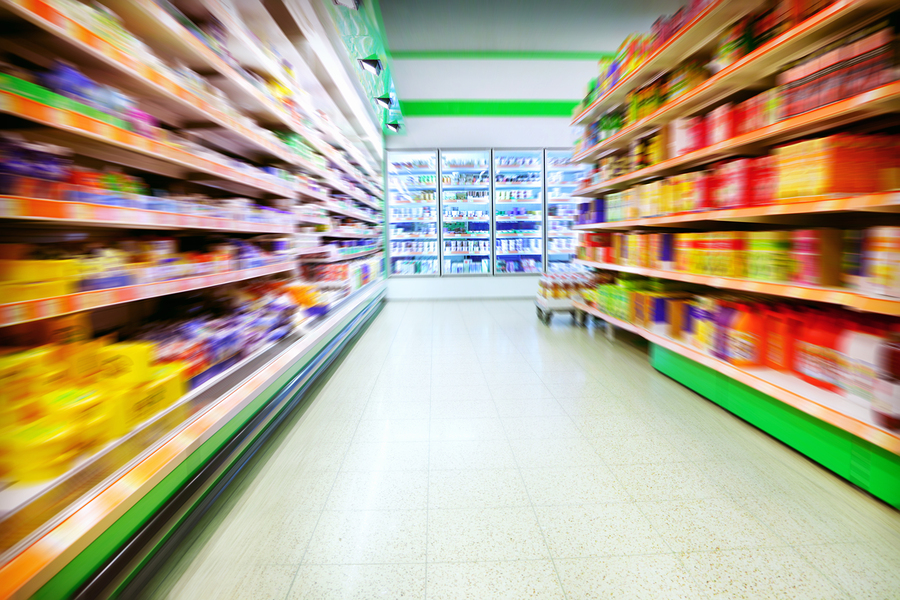By Guy Courtin, VP Industry & Solution Strategy, Infor Retail
The grocery business is like picking a checkout lane: regardless if you choose the shortest line, you never truly feel like you “win.” The best grocers in the business are constantly chasing that perfect checkout experience, but most customers are just struggling to figure out which line will get them on with the rest of their day. And, as much as grocers continue to invest in building a better shopping experience, consumers still think of a trip to the grocery store as a chore.
Considering some Americans spend over a third of their discretionary income on groceries, one would think the revenue would provide ample opportunities for players in the space to make a healthy profit. But alas, the grocery industry is completely saturated with everything from local shops to large national chains, all of which are under constant threat from external players, including online giants like Amazon and mega retailers such as Walmart and Target. Even non-grocers, like convenience stores and gas stations, are becoming a bigger part of the traditional grocery business. Perhaps the biggest disruptor affecting the industry is us – the incredibly demanding and fickle consumers. What is a grocer to do?
The answer begins not in the store, but in the supply chain. Why? Because our supply chains influence nearly every issue impacting retail and grocery right now.
Consumerization is here to stay
Retail, and grocery by extension, have undergone a seismic shift in the balance of power between brands and consumers. Due in large part to digitization, we, consumers have wrestled away the power from large corporations and brands. As consumers, we now have the reach thanks to our phones, the voice via social media platforms, and the fulfilment expectations due to the internet. Add this shift to the reality that grocers struggle with differentiating themselves within the crowded competitive landscape in which they operate, and you have an equation for even more of an overall business challenge. So, what are grocers to do? The answer lies in the supply chain and the extended network, both of which address the cornerstone of modern retail – customization. Consumers expect to be catered to and personalized to – in a multitude of ways.
More customization of products, for one. According to BMW, if it ran its South Carolina factory at full tilt for an entire year, the carmaker would never produce the exact same car twice. We have certainly moved away from the times of Henry Ford and the Model T. In a world where mass customization of products is touching cars, sneakers, suits, watches and more, it is certainly impacting grocery. Consumers have already asked for a wide variety of choices within their grocery store – look at Crest and you find over 45 different products under toothpaste. The typical grocery store now has over 40,000 items, compared to approximately 7,000 in the 1990s. While these trends show a continued growth of choice for consumers, they also represent their desire for more tailored products to meet their desires. This appears to be an indicator of consumers driving toward truly personalized items. We as consumers are starting to act like spoiled toddlers; we do not understand why we cannot get exactly the product we want. But our desire for customization does not end with the product.
More customization of delivery is becoming as much a characteristic of products as the actual items themselves. Online grocery, delivery to the home, curbside pickup, and pickup in lockers are many of the fulfillment and ordering options that have become commonplace. Consumers all have busy lives, and they are looking for as much convenience as possible. Grocery shopping is ripe for offering consumers options as to how they want their orders to be fulfilled and as such, grocers must become much nimbler on how they package, store, and fulfill the customers’ orders. Amazon recently announced it will be delivering packages to trunks. How soon before we expect our groceries to be loaded into our cars while we are at the dentist or parked at the coffee shop? Not far off, at all – the grocer Kroger has already started to experiment with robotic delivery.
More customization of experiences is the overarching theme that covers all the needs for grocers. Like what we are experiencing in retail as a whole – consumers want more than simply accessing products, they expect an experience. Retailers are looking to offer their consumers the experiences needed to drive traffic and loyalty. Ranging from cooking lessons within the store to services such as fresh bakeries, coffee shops, optometrists, and even bars, grocery stores are looking to add reasons for consumers to want to come to their locations by making their stores more than simply a location to pick up your gallon of milk, loaf of bread, and cereal. These grocers must look to their physical assets – a.k.a. the stores – not only as a place to store and dispense inventory, but as a destination for their customers.
This drive toward greater customization starts in the supply chain. A finely-tuned supply chain provides the foundation for a more tailored consumer experience. When it comes to more personalized products, it is the supply chain and having greater visibility of that network that allows for the retailers and brands to truly understand what they can produce. As for customized delivery, it is the network and the supply chain that is needed to address this fulfillment need. Finally, when it comes to experiences, look to your supply chain to understand where and which parts can be leaned on to enhance the experiences of the customer. As grocers race to meet consumers’ growing demands, they should look to their supply chains as a wildcard to solve and create opportunities to meet the personalization that is touching all aspects of the business.
Guy Courtin is VP of Industry & Solution Strategy at Infor Retail.
